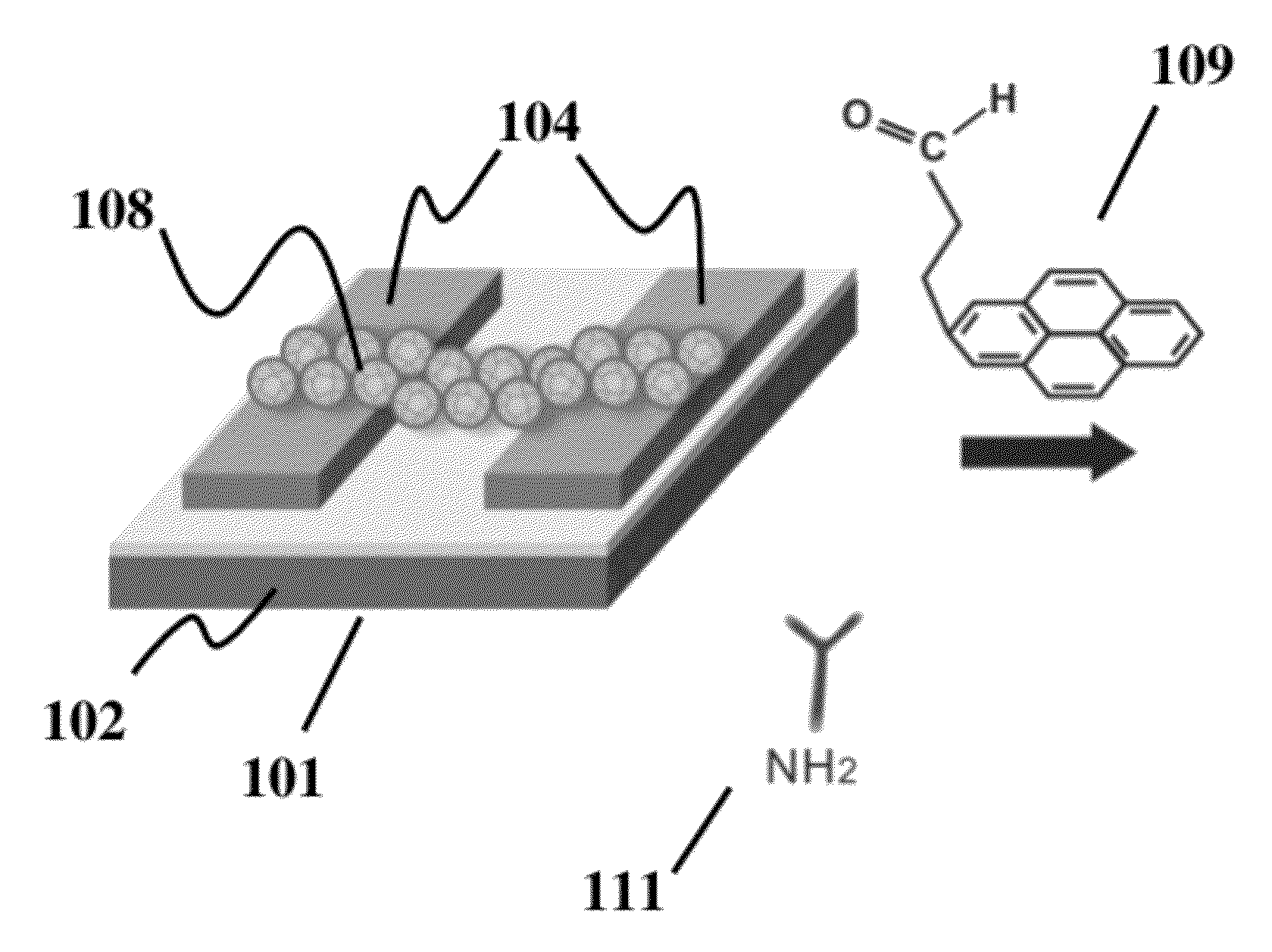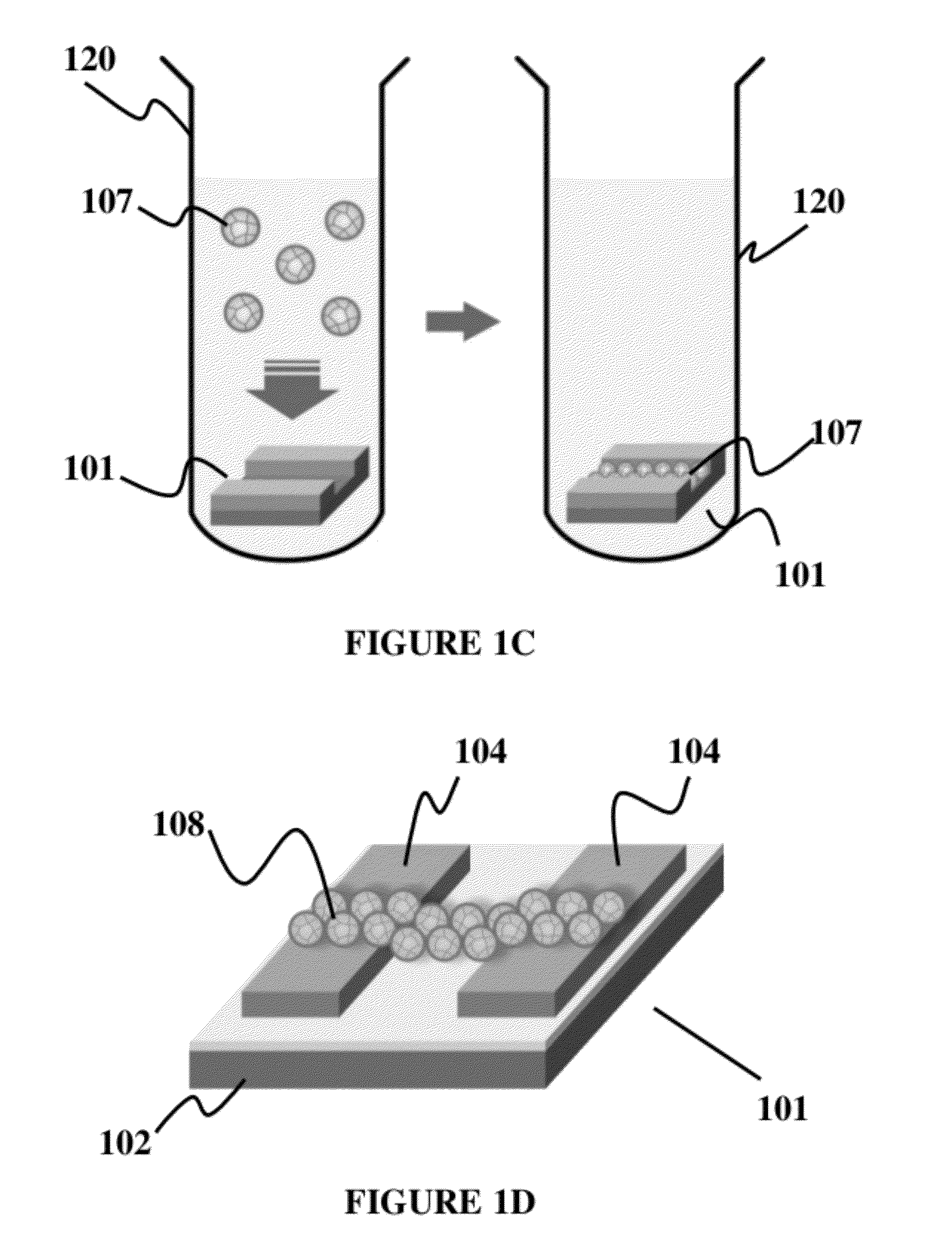Graphene-encapsulated nanoparticle-based biosensor for the selective detection of biomarkers
a biosensor and nanoparticle technology, applied in the field of graphene-encapsulated nanoparticle-based biosensors for selective detection of biomarkers, can solve the problem that their potential as biosensors has not been fully explored
- Summary
- Abstract
- Description
- Claims
- Application Information
AI Technical Summary
Benefits of technology
Problems solved by technology
Method used
Image
Examples
example 1
Materials and Methods
[0038]Preparation of reduced graphene oxide and SiO2 NPs: GO was obtained from SP-1 graphite utilizing the modified Hummer method. See, e.g., Eda et al., Nat. Nanotechnol. 2008, 3, 270. For the GO assembly on the surface of NPs, GO suspension was injected into the nanoparticle solution for 10 minutes, and GO-NPs were separated from GO solution using a centrifuge. SiO2 NP (100 nm) solution was purchased from Corpuscular Inc. For GO-NP assembly, the photo resist-patterned substrate was placed in the NP solution, and GO-NPs were assembled on the substrate by applying centrifugal force for three minutes. After the deposition of GO-NPs on the substrate, the GO on the NP surface, having the low conductance, was reduced to graphene by exposure to hydrazine vapor overnight.
[0039]Surface molecular pattering: 3-Aminopropyltriethoxysilane (APTES) and cysteamine molecules were used in forming SAMs. For the patterning of APTES SAM on SiO2, the photoresist (AZ5214) was first ...
example 2
[0045]The following example illustrates the fabrication and application of a reduced graphene oxide (rGO) encapsulated nanoparticle (NP)-based FET biosensor for selective and sensitive detection of key biomarker proteins for breast cancer. This example demonstrates the use of Human Epidermal growth factor Receptor 2 (HER2) and Epidermal Growth Factor Receptor (EGFR), which are known to be over-expressed in breast cancers, as examples to demonstrate the high sensitivity and selectivity of the graphene-encapsulated NP biosensor. This biosensor could be used to detect any biomarkers with relative ease. In typical experiments for fabricating the graphene encapsulated NPs-based biosensors, individual silicon oxide NPs (100 nm), functionalized with 3-aminopropyltriethoxysilane (APTES), were first coated with thin layers of graphene oxide (GO), which prevent aggregation and maintain high electrical conductivity (FIG. 1). This was mainly achieved via the electrostatic interaction between th...
PUM
| Property | Measurement | Unit |
|---|---|---|
| semiconductor | aaaaa | aaaaa |
| ring structure | aaaaa | aaaaa |
| conductive | aaaaa | aaaaa |
Abstract
Description
Claims
Application Information
 Login to View More
Login to View More - R&D
- Intellectual Property
- Life Sciences
- Materials
- Tech Scout
- Unparalleled Data Quality
- Higher Quality Content
- 60% Fewer Hallucinations
Browse by: Latest US Patents, China's latest patents, Technical Efficacy Thesaurus, Application Domain, Technology Topic, Popular Technical Reports.
© 2025 PatSnap. All rights reserved.Legal|Privacy policy|Modern Slavery Act Transparency Statement|Sitemap|About US| Contact US: help@patsnap.com



